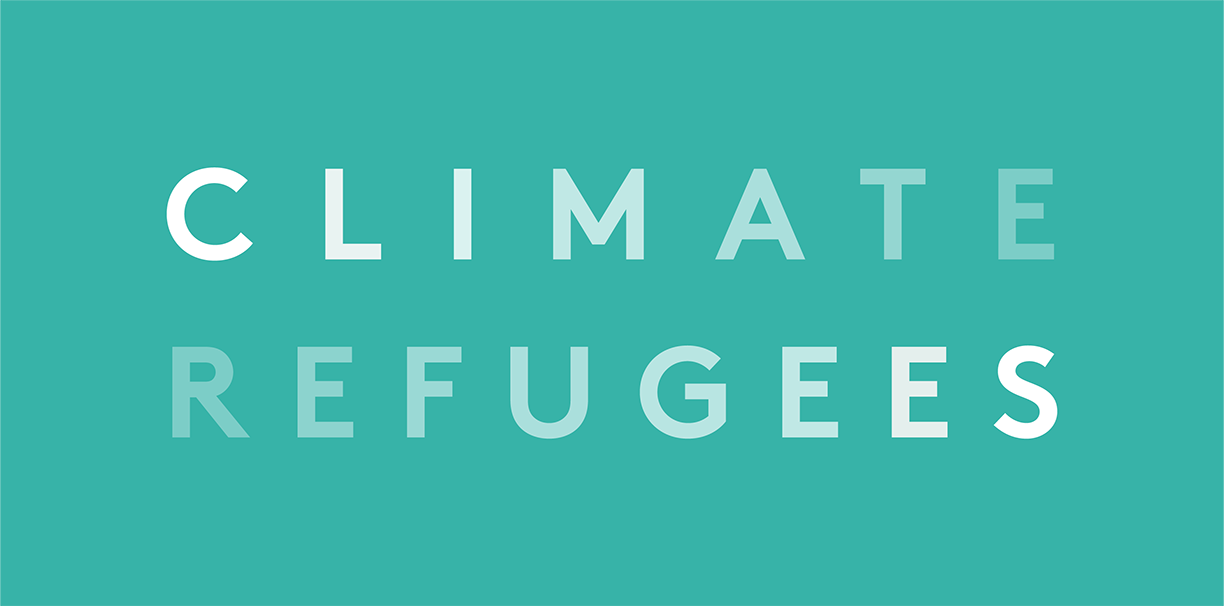With about 30 percent of Iraq covered in desert, all of these added climate problems, along with a population rapidly increasing, which we detailed in this earlier Spotlight, renders an already vulnerable population from conflict, geopolitical tensions, decades of sanctions, chronic poverty and corruption, rather fragile. It’s no wonder then that right now, thousands of families across Iraq continue to be displaced from their homes in rural parts of the country due to the loss of arable land and water scarcity.
2021 Deepened Climate Migration as Survival
2021 closed with yet another year of record forcibly displaced persons and the climate crisis played a major role driving over 84 million people out of their homes.
We already know that in 2020, three times as many people - 30.7 million - were internally displaced by the climate crisis than by conflict or violence. Numbers over the last decade don’t fair any better either, where twice as much displacement was triggered by weather-related events than conflict or violence. The trends tell us people are being forcibly displaced, forced to migrate and wherever possible, migrating to survive.
WFP Declares Southern Madagascar on Brink of Climate Change-Driven Famine
WFP Executive Director David Beasley has emphasized that the food crisis “is not because of war or conflict, this is because of climate change.” Madagascar’s global share of emissions is only 0.01%, yet the people there are currently experiencing some of the worst effects.
Legal Status: The Critical Difference Between Two Climate Migrant Stories
A recent story in The Nation recounts the experiences of two climate migrants seeking refuge in the US with one defining difference between the two: legal status. The ease with which one migrant fleeing climate disaster is able to immigrate to the US mainland is juxtaposed to the difficulty of the other, highlighting the time sensitive need for the US to create legal infrastructure for climate migration.
As 2020 Ties for Hottest Year, Pandemic Delays Climate Action and Health Risks Widen Inequality
Data by the Climate Vulnerable Forum shows only 73 out of 160 nations have complied with the 2020 Paris Agreement deadline for countries to submit revised climate plans to the UN.
Of those 73, 69 countries have stepped up commitments in either adaptation or lowering emissions - 57 countries that submitted stronger emissions reduction targets account for only 13% of global emissions, while the 66 countries that committed to stronger adaptation, account for 1.67 billion people, just a fifth of the global population.
Changing Climates In Africa Require Better Preparation, UN Says
A multi-agency report led by the World Meteorological Organization (WMO) is attempting to fill a gap in reliable and timely information on climate change in Africa, with the hopes that better information will spur greater climate-related development planning.
Along with the report’s release, WMO’s Regional Strategic Office Director Filipe Lucio called for action on two fronts - adaptation “today” and mitigation “tomorrow.” A point made by a Senegalese economist whose work examines climate change impacts on migration in the Sahel, that we interviewed earlier this year in this PERSPECTIVES piece.
Various strategies are required to address an alarming warming trend in Africa, with northern and southern Africa set to get even drier and hotter, while the Sahel region becomes wetter.
The report offers policy recommendations in several different areas, reflecting the fact that climate change impacts a variety of sectors in complex ways. In particular, the report’s authors note the importance of addressing agricultural impacts, given the industry’s position as the “backbone of Africa’s economy.” Indeed, climate change is a serious threat to food security around the world, an issue inextricably linked to population displacement.
Increasing food insecurity and displacement in Africa is a sinister combination, as the report notes. Refugee populations often live in climate ‘hot spots’, where they are particularly vulnerable to both slow and sudden crises, such as desertification or flooding. This can even result in secondary displacement.
For instance, IOM and UNHCR data indicate, 60% of all internal displacements in the East and Horn of Africa in 2019 were due to climate-induced disasters. In particular, pastoralists are highly vulnerable to the combined effects of drought, resource competition and conflict.
Facts and data are plentiful and should be persuasive, but as is our work premise, human impacts are the stories we need to tell, to spur change and filter up to policymakers who need to keep human beings disproportionately affected in the forefront, like our field report from the Sahel’s Lake Chad Basin.
While the report focuses on providing much-needed information for policymakers, it also provides some policy recommendations. For example, the authors highlight the need for strengthened guidance and increased protection for people displaced by environmental degradation and disasters. Additionally, better multi-hazard early warning systems, aimed at reducing the risk of disasters such as typhoons, would undoubtedly help build resilience to a changing climate while reducing the risk of secondary displacement.
In addition to filling information gaps, the report ultimately provides an important reminder that climate policy in Africa requires innovative thinking from policymakers and activists. As Lucio said during the report’s release, “forward thinking analysis” is required in order to anticipate trends and design better, more resilient systems. (UN News)











